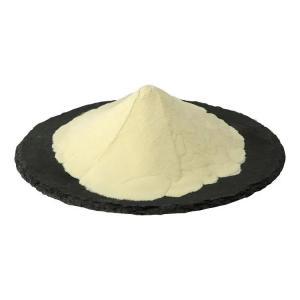Phosphatidylserine: Unique properties of amphiphilism
Time:2025-02-14Phosphatidylserine is an important phospholipid with unique amphiphilicity, that is, it has both hydrophilicity and hydrophobicity simultaneously.
Phosphatidylserine is composed of glycerol, fatty acids, phosphate, and serine. Two of the three hydroxyl groups of the glycerol molecule are linked to fatty acids through ester bonds, and these two fatty acid chains form the hydrophobic tail of phosphatidylserine. The third hydroxyl group of glycerol binds to phosphate, and phosphate is then linked to serine, forming the hydrophilic head of phosphatidylserine. This structure makes one end of phosphatidylserine a hydrophilic polar group, and the other end a hydrophobic non - polar fatty acid chain, thus endowing it with amphiphilicity.
The hydrophilic head of phosphatidylserine contains a negatively charged phosphate group and a positively charged serine residue. These charged groups can form hydrogen bonds with water molecules, enabling phosphatidylserine to be soluble in water to a certain extent. In the aqueous environment of living organisms, the hydrophilic head of phosphatidylserine will face the aqueous phase, ensuring its stable existence in the intracellular and extracellular aqueous environments. Groups such as serine in the hydrophilic head can specifically interact with other biomolecules, such as proteins and enzymes. During the process of cell signal transduction, phosphatidylserine can serve as a binding site for signaling molecules. Through interaction with signaling proteins, it transmits extracellular signals into the cell, initiating a series of cellular reactions.
The fatty acid chains of the hydrophobic tail of phosphatidylserine have non - polar properties. They aggregate with each other to avoid contact with water, forming the internal hydrophobic region of the biological membrane. In the biological membrane, the hydrophobic tails of phosphatidylserine come close to each other, forming a continuous hydrophobic barrier that prevents water - soluble substances from freely passing through the biological membrane, thus ensuring the integrity and relative independence of the cell and maintaining the stability of the intracellular environment.
The hydrophobic tail of phosphatidylserine can interact with other hydrophobic molecules, such as cholesterol and fatty acids. For example, in the biological membrane, cholesterol can insert between the hydrophobic tails of phospholipid molecules such as phosphatidylserine, regulating the fluidity and stability of the biological membrane. This interaction with other hydrophobic molecules is crucial for the function and structural integrity of the biological membrane.
The amphiphilicity of phosphatidylserine enables it to spontaneously form a lipid bilayer structure in an aqueous solution, which is the basic framework of the biological membrane. This lipid bilayer structure provides a stable boundary for the cell, separating the intracellular and extracellular environments. At the same time, it allows some specific substances to pass through the biological membrane for transmembrane transport, maintaining the normal metabolic and physiological functions of the cell.
In the biological membrane, phosphatidylserine interacts with membrane proteins, and its amphiphilicity affects the localization, conformation, and function of membrane proteins. The hydrophilic head can interact with the hydrophilic regions of membrane proteins, while the hydrophobic tail interacts with the transmembrane regions of membrane proteins, helping membrane proteins to be correctly embedded in the biological membrane and regulating the activity and function of membrane proteins, such as the opening and closing of ion channels and the signal transduction of receptors.
During the process of apoptosis, phosphatidylserine flips from the inner side to the outer side of the cell membrane. Its exposed hydrophilic head can serve as a signal that is recognized by phagocytes, thus initiating the process of cell phagocytosis and clearance, which is of great significance for maintaining the normal physiological functions and the stability of the internal environment of the organism.


 CN
CN





